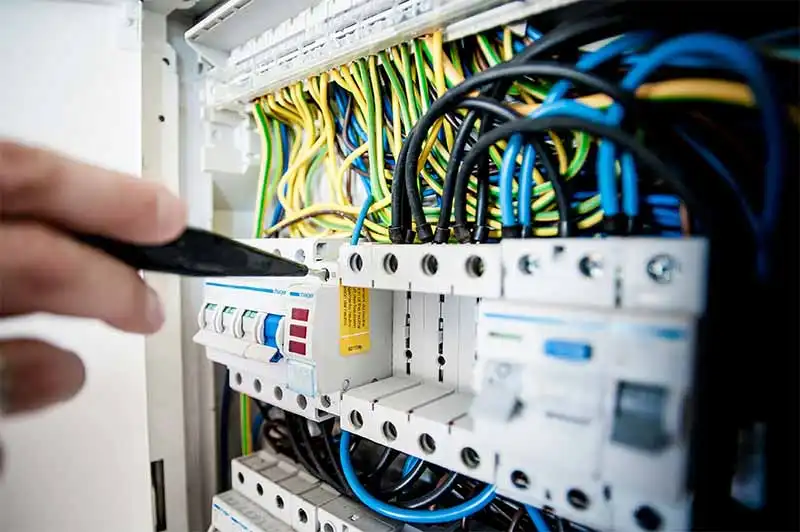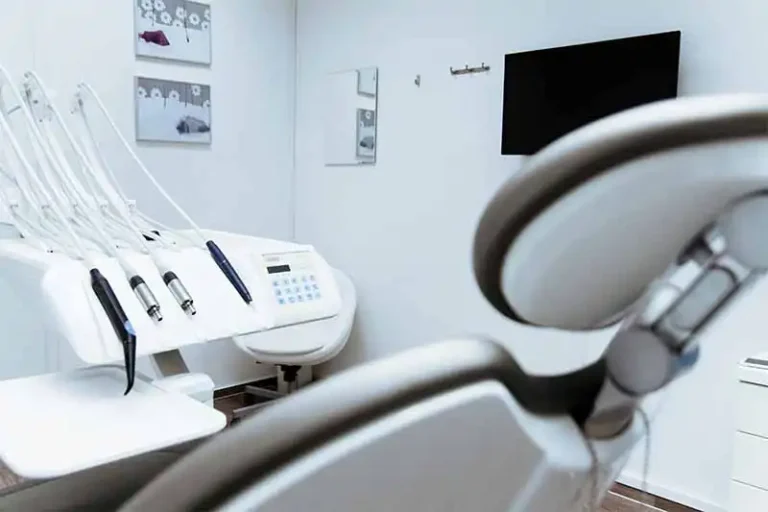Google Ads for Electricians: Get More Leads in 2025
If you’re an electrician looking to get more leads, Google Ads can be a game-changer.
Unlike traditional advertising methods like flyers or newspaper ads, Google Ads puts your business in front of people actively searching for electrical services in your area.
Whether someone needs an emergency electrician, panel upgrade, or just a quick electrical inspection, running the right Google Ads campaign ensures your business is the one they see first.
How Google Ads Works
At its core, Google Ads operates on a pay-per-click (PPC) system.
This means you only pay when someone actually clicks on your ad—making it a cost-effective way to attract potential customers.
When a homeowner searches for something like “electrician near me”, Google runs an auction in real-time to decide which ads appear at the top of the search results.
The ranking is based on factors like:
- Your bid amount (how much you’re willing to pay per click)
- Ad relevance (how well your ad matches the searcher’s intent)
- Quality Score (a measure of your ad copy, keywords, and landing page experience)
Even if a competitor bids higher, you can still outrank them by having a more relevant and well-optimized ad.
This is why choosing the right keywords, writing compelling ad copy, and having a well-designed landing page are crucial for success.
Why Electricians Need Google Ads
People searching for electrical services are often in urgent need—they have a problem and want it fixed fast.
Whether it’s a power outage, faulty wiring, or a new installation, most homeowners or businesses turn to Google for help.
This is where Google Ads becomes valuable because it allows you to:
- Appear at the top of search results instantly, instead of waiting months for SEO to kick in.
- Attract high-intent customers who are ready to hire an electrician.
- Target specific service areas, ensuring you only get leads from locations you serve.
- Control your budget by setting daily spending limits and adjusting bids based on performance.
If your competitors are already running Google Ads, not having your own campaign means you’re missing out on potential jobs.
Types of Google Ads Campaigns for Electricians
Not all Google Ads campaigns work the same way, and choosing the right type of campaign depends on your business goals.
Search Ads (Best for Local Electricians)
Search Ads are the most effective type of Google Ads for electricians because they show up when people search for electrical services.
These ads appear at the top of Google Search results and usually include a phone number, website link, and a compelling headline like “Licensed Electrician Near You – Call Now for a Free Quote.”
Local Services Ads (Google Guaranteed for Electricians)
If you want to boost trust and credibility, Local Services Ads (LSAs) are a great option.
These ads show up with a “Google Guaranteed” badge, meaning Google has verified your business.
They’re pay-per-lead instead of pay-per-click, so you only pay when a customer contacts you directly through the ad.
LSAs work well for electricians because they attract homeowners looking for trusted professionals in their area.
Display Ads (For Brand Awareness)
While not as direct as Search Ads, Display Ads can be useful for brand-building.
These are visual banner ads that appear on websites related to home improvement, real estate, and local services.
If you want to stay in front of potential customers even when they’re not actively searching for an electrician, Display Ads can help keep your business top-of-mind.
Understanding how Google Ads works and choosing the right campaign type is the first step toward getting more qualified leads for your electrical business.
Whether you’re a self-employed electrician or run a larger electrical contracting company, setting up the right Google Ads campaign can put you ahead of your competitors and drive more calls, bookings, and long-term customers.
Does Google Ads Work for Electricians?
If you’re an electrician wondering whether Google Ads is worth the investment, the short answer is yes—when done correctly.
Unlike other advertising methods that rely on broad exposure, Google Ads helps you connect directly with homeowners and businesses actively searching for electrical services.
This means your ads reach people who need an electrician right now, making it one of the most effective ways to generate leads, calls, and job bookings.
Success Stories & ROI Potential
Many electricians have successfully grown their business using Google Ads, with some reporting 5–10X returns on their ad spend.
For example, an electrician in a competitive city might spend $1,000 per month on ads but generate $5,000–$10,000 in revenue from booked jobs.
The reason behind this success is simple: when someone searches for “emergency electrician near me” or “electrical repair services in [city],” they are in immediate need.
If your ad appears at the top, there’s a high chance they will click, call, and hire you.
Another advantage is that Google Ads allows you to track everything.
You can measure how many people clicked your ad, how many called your business, and how much you spent per lead.
This makes it easy to adjust your budget and maximize your return on investment (ROI).
Challenges & Common Mistakes
While Google Ads can be highly profitable for electricians, it’s not as simple as just running an ad and expecting instant results.
Many electricians waste money due to avoidable mistakes such as:
- Poor Budget Management – Some business owners either spend too little and don’t get enough exposure or overspend without tracking which keywords and ads perform best. The key is to start small, monitor performance, and gradually increase spending on what works.
- Wrong Targeting – If you’re an electrician serving a specific area, you need to set your location targeting correctly. A common mistake is accidentally targeting people outside your service area, leading to wasted ad spend.
- Weak Ad Copy – Your ad needs to grab attention and encourage action. Generic headlines like “Best Electrician” don’t perform as well as specific ones like “Licensed Electrician – Same Day Service – Free Estimates.”
- Ignoring Negative Keywords – Without filtering out irrelevant searches, your ads might appear for people looking for “electrician jobs” instead of customers needing service. Adding negative keywords like “training,” “salary,” and “DIY” prevents wasted clicks.
- Poor Landing Page Experience – Even if your ad gets clicks, a slow or confusing website can make potential customers leave without calling. A simple, mobile-friendly landing page with clear contact details and a strong call-to-action (CTA) is crucial.
Google Ads absolutely works for electricians, but success depends on proper strategy and execution.
By setting the right budget, choosing the best keywords, crafting compelling ad copy, and avoiding common mistakes, you can turn your ads into a steady source of high-quality leads for your electrical business.
Setting Up a Google Ads Account for Your Electrical Business
Before you can start running ads and generating leads for your electrical services, you need to create a Google Ads account.
Setting up the account correctly from the start ensures that you can efficiently manage your campaigns, track results, and avoid any billing or ad performance issues later.
Step-by-Step Guide to Creating a Google Ads Account
First, go to Google Ads and click on “Start Now”. Google may ask whether you want to set up a Smart Campaign or Expert Mode.
While Smart Campaigns are easier to set up, they offer limited control. For electricians who want to optimize ad performance and control costs, choosing Expert Mode is the best option.
Once in Expert Mode, follow these steps:
- Sign in with your Google account – Use a Gmail account that’s dedicated to your business to keep everything organized.
- Choose “New Campaign” – Google may prompt you to create a campaign immediately, but you can skip this for now and configure your account first.
- Set Up Your Business Details – Enter your electrical business name, website, and time zone. Choose the correct currency since Google will charge you in this currency moving forward.
- Billing Information – Add your payment details to activate your account. Google Ads typically offers two payment options: manual payments (adding funds before running ads) or automatic payments (charges are deducted after running ads).
Linking Google My Business (Now Google Business Profile)
If you already have a Google Business Profile (formerly Google My Business), linking it to Google Ads improves local ad visibility.
This is especially useful for electricians, as many customers prefer to hire professionals with strong local presence and customer reviews.
To link your Google Business Profile:
- Go to the “Ads & Extensions” tab in Google Ads.
- Click “Add Location Extension” and select your Google Business Profile.
- Ensure your business name, address, and phone number match what’s listed on your website to maintain consistency.
Once linked, your ads can display your business location, reviews, and a call button, making it easier for potential customers to contact you directly.
This is especially powerful for mobile searches, where users often prefer to call an electrician right away instead of visiting a website.
Setting up a Google Ads account properly ensures that your electrical business is ready to launch effective ad campaigns without technical or billing issues.
By linking your Google Business Profile, you can also increase trust and visibility, helping you attract more local customers in need of electrical services.
Creating a Google Ads Campaign for Electricians
Once your Google Ads account is set up, the next step is to create a campaign that attracts homeowners and businesses actively searching for electrical services.
Setting up your campaign correctly from the start helps you avoid wasted ad spend and ensures you get high-quality leads from potential customers in your service area.
Campaign Goal and Type
The first step in creating a campaign is selecting the right advertising goal. Google Ads provides several options, but for electricians, the most effective goals are:
- Leads – If your primary goal is to receive more calls, form submissions, or bookings, this is the best choice.
- Website Traffic – Useful if you want to send potential customers to your site for more information, but it’s not as direct as the Leads goal.
- Local Store Visits and Promotions – Ideal if you have a physical office where customers visit for consultations or electrical product sales.
After selecting your goal, you’ll need to choose the campaign type.
Electricians typically get the best results from:
- Search Ads – These appear at the top of Google search results when someone looks for an electrician near me, electrical repair services, or similar terms. This is the best option for generating leads quickly.
- Local Services Ads (LSA) – These ads appear above regular search ads and include a Google Guaranteed badge, which increases trust. LSAs work well for electricians who want phone calls from serious customers rather than just website visits.
While Display Ads and YouTube Ads can work for branding, they are not ideal for electricians just starting with Google Ads.
These formats are better suited for long-term brand awareness rather than immediate lead generation.
Campaign Name and Network Selection
Choosing a clear campaign name helps with organization, especially when running multiple campaigns.
A good format is “Electrician – [City Name] – Search Ads” so you can easily track performance.
When selecting networks, it’s best to stick to the Search Network only and avoid the Display Network initially.
The Search Network ensures your ads appear when potential customers actively search for electrical services, while the Display Network places ads on random websites and apps, which often leads to wasted clicks and low-quality leads.
Location Targeting and Language Options
For electricians, location targeting is one of the most important settings.
Since most customers prefer hiring a local electrician, it’s crucial to define your service area properly.
- Geo-Targeting Best Practices – Instead of targeting an entire city or state, set a radius around your business location. For example, if you serve customers within a 10-mile radius, Google will show your ads only to people searching from that area. This prevents clicks from people outside your service zone, saving you money.
- Excluding Irrelevant Areas – If there are places where you don’t provide services, you can exclude them to avoid wasting ad spend on people who won’t convert into customers.
For language settings, it’s best to choose English (or the primary language spoken by your target audience).
If you serve a bilingual community, you can include additional language options to ensure your ads appear to the right customers.
Setting up a Google Ads campaign correctly ensures that your budget is spent efficiently on potential customers who need an electrician.
By choosing the right campaign type, targeting local areas accurately, and avoiding unnecessary networks, you increase your chances of getting more calls and bookings without overspending.
Setting Your Bidding Strategy & Manual CPC for Electricians
Choosing the right bidding strategy in Google Ads is crucial for electricians who want to maximize their ad budget and attract high-quality leads.
Google Ads offers both manual and automated bidding options, but selecting the right one depends on your experience level and campaign goals.
Manual CPC vs. Automated Bidding: Which One is Better for Electricians?
Google Ads provides two primary bidding approaches: Manual CPC (Cost-Per-Click) and Automated Bidding.
Manual CPC allows you to set a maximum bid for each click, giving you full control over how much you’re willing to pay per keyword.
This is ideal if you want to start with a smaller budget and monitor performance closely before scaling up.
Automated Bidding lets Google adjust bids based on what it predicts will drive conversions.
While this can be useful, it often spends more aggressively and might waste budget if not carefully monitored.
For electricians new to Google Ads, starting with Manual CPC is the best approach because it allows you to control costs and analyze which keywords drive real customer inquiries.
Recommended Bid Strategies for Electricians
Once you gain some data and understand which keywords bring in the best leads, you can explore automated bid strategies to optimize your campaign:
Maximize Clicks
This strategy helps get as many visitors to your site as possible within your budget.
It’s useful for testing ads and gathering performance data but may not always lead to conversions.
Target CPA (Cost Per Acquisition)
This automated strategy optimizes bids to get leads at a set cost.
For example, if you set a Target CPA of $25, Google will try to get as many electrician service inquiries as possible at or below that amount.
However, this works best when you already have conversion tracking set up and enough data for Google to make smart bid decisions.
For most local electricians, a combination of starting with Manual CPC and later testing Target CPA is the best approach.
Setting Bid Adjustments for High-Value Service Areas
Not all locations generate the same quality of leads.
Some areas might have higher demand for electricians, while others may produce low-quality clicks that don’t convert into booked jobs.
To ensure you’re spending more on areas that bring in profitable customers, you can apply bid adjustments based on location.
For example:
- If you notice that leads from a specific neighborhood, ZIP code, or city tend to convert better, you can increase bids for that area by 10-20% to appear more frequently in searches.
- If certain areas generate too many clicks but few actual calls, you can lower bids or exclude those locations to save budget.
This strategy ensures that your ad spend goes toward areas where customers are more likely to hire your electrical services.
Selecting the right bidding strategy directly impacts how well your Google Ads campaign performs.
Manual CPC gives you control in the beginning, while Target CPA can help optimize costs once you have enough conversion data.
Adding bid adjustments for high-performing areas ensures you focus on regions that generate the most profitable electrician jobs, making the most of your budget.
Ad Rotation & Ad Optimization
Running a successful Google Ads campaign for electricians isn’t just about setting up ads and hoping for the best.
To consistently attract quality leads, you need to test, analyze, and refine your ads over time. That’s where ad rotation and optimization come in.
Ad Rotation Strategies: Why Testing Multiple Ads Matters
When someone searches for an electrician near them, Google doesn’t just show the same ad every time.
Instead, if you have multiple ads in an ad group, Google rotates them to see which ones perform best.
By enabling ad rotation, you allow Google to test different versions of your ads and prioritize the ones that get the most clicks, calls, or conversions.
For electricians, the best approach is to have at least three ad variations per ad group, each highlighting a different angle.
For example:
- One ad might emphasize “24/7 emergency electrician services” for urgent calls.
- Another could focus on affordable pricing or free estimates.
- A third could showcase licensed, insured, and trusted local expertise to build credibility.
This strategy helps Google identify which message resonates most with potential customers, ensuring you get the best return on your ad spend.
A/B Testing: Finding the Best Headlines, Descriptions, and CTAs
A/B testing (also known as split testing) is the key to improving Google Ads for electricians over time.
It involves creating small variations in your ad copy to see what works best.
For example, you could test:
- Different headlines: “Certified Electrician Near You” vs. “Fast & Reliable Electrical Repairs”
- Various descriptions: “Same-day service, call now!” vs. “Licensed electrician with 10+ years of experience.”
- Unique calls to action (CTAs): “Book an Appointment” vs. “Call Now for a Free Estimate”
After running these variations for a few weeks, you can see which ones generate the most calls, quote requests, or bookings.
Over time, this helps you refine your messaging so your ads consistently attract the right customers.
Optimizing your Google Ads campaign for electricians is an ongoing process.
By using ad rotation, you let Google test different versions of your ads and prioritize the highest-performing ones.
Meanwhile, A/B testing allows you to experiment with headlines, descriptions, and CTAs to see what truly connects with homeowners and businesses looking for an electrician.
With the right approach, you’ll improve your click-through rates (CTR), conversion rates, and overall return on investment (ROI)—leading to more job bookings and calls for your electrical business.
Ad Assets to Boost Clicks & Calls
When running Google Ads for electricians, your goal isn’t just to show up in search results—it’s to stand out and encourage potential customers to click or call.
That’s where ad assets (formerly known as ad extensions) come in.
These extra elements make your ads more informative, increasing visibility and making it easier for people to contact your business directly.
Call Extensions: Convert Searches into Calls Instantly
Many people searching for an electrician near them need immediate help.
Call extensions add a clickable phone number directly in your ad, allowing potential clients to call you with one tap.
This is especially powerful for emergency electrical services, as it removes the extra step of visiting your website before reaching out.
To maximize conversions, ensure your call extension is only active during your business hours so you don’t miss inquiries.
If you offer 24/7 service, make it clear in your ad copy to attract more emergency calls.
Location Extensions: Build Local Trust & Visibility
For electricians, credibility matters. Location extensions display your business address directly in your ad, reinforcing that you’re a local service provider.
If you have a physical office or storefront, this helps build trust by showing potential customers exactly where you’re based.
Even if you’re a mobile electrician without a fixed location, you can use this extension to display the city or service area you cover, helping Google match you with local searchers looking for an electrical contractor nearby.
Sitelink Extensions: Guide Customers to Key Services
Not every potential customer is looking for the same service. Sitelink extensions allow you to add extra clickable links below your ad, directing users to specific pages on your website.
This helps potential clients quickly find the exact service they need, improving both click-through rates and conversion rates.
For example, a well-optimized Google Ads campaign for electricians could include sitelinks such as:
- Emergency Electrical Repairs – For urgent service calls
- Request a Free Quote – Leads customers to a form for pricing inquiries
- Commercial Electrical Services – If you also serve businesses and offices
- EV Charger Installation – If you provide electric vehicle charging station setups
These extra links make your ad more useful and engaging, increasing the chances of attracting qualified leads.
Callout Extensions: Highlight Your Unique Selling Points
While your headline and description focus on the main message, callout extensions allow you to add additional selling points in short, eye-catching phrases.
These help differentiate your electrical business from competitors by emphasizing what makes you the best choice.
Some effective callout extensions for electricians include:
- Licensed & Insured Electricians
- Upfront Pricing – No Hidden Fees
- Fast Response – Same-Day Service
- Over 10 Years of Experience
- 100+ 5-Star Customer Reviews
These short yet impactful statements build trust and encourage clicks, making your ad more compelling.
Using ad extensions in Google Ads is a simple yet powerful way to enhance your electrician ads, making them more informative, visible, and clickable.
Call extensions help drive direct calls, location extensions establish trust, sitelinks direct users to key services, and callout extensions highlight your expertise.
By strategically adding these assets, you make it easier for potential customers to contact you, book your services, and ultimately, increase your return on investment (ROI).
Creating Ad Groups and Choosing the Right Keyword Match Types
Setting up your Google Ads campaign for electricians isn’t just about choosing the right keywords—it’s also about organizing them effectively.
This is where ad groups come in. By structuring your ad groups properly and using the right keyword match types, you ensure that your ads appear for the most relevant searches, helping you attract quality leads while controlling costs.
How Does an Ad Group Work?
An ad group is a way to organize your ads and keywords within a campaign.
Instead of putting all your electrical services under one general ad, you should group them by category.
This allows you to create highly targeted ads that match what potential customers are searching for, improving ad relevance and click-through rates (CTR).
For example, a well-structured campaign might include separate ad groups like:
- Residential Electrical Services – Keywords focused on home electrical repairs, rewiring, and installations.
- Commercial Electricians – Targeting business owners needing electrical maintenance or wiring for offices and retail stores.
- Emergency Electrical Services – Ads targeting searches like “24-hour electrician near me” or “emergency power outage repair.”
- EV Charger Installation – If you offer electric vehicle charging station installation, having a separate ad group can help you target the right audience.
By structuring ad groups this way, you ensure that each ad is highly relevant to the keywords within the group, improving your Ad Rank and Quality Score, which can lower your cost per click (CPC) while increasing conversions.
Adding Keywords to Ad Groups
After setting up your ad groups, the next step is to add keywords that match the services within each group.
Choosing the right search terms ensures your ads show up when potential customers are actively looking for an electrician.
For instance, in the Residential Electrical Services ad group, you might include:
- “home electrical repair near me”
- “light fixture installation”
- “house rewiring services”
In the Emergency Electrical Services ad group, your keywords might be:
- “24-hour electrician near me”
- “emergency power outage repair”
- “urgent electrician service”
Categorizing your keywords this way helps improve ad relevance, ensuring that people who click on your ad see exactly what they’re looking for when they land on your website.
Keyword Match Types (Broad, Phrase, Exact, and Negative)
When adding keywords, it’s important to use the right match types to balance reach and relevance.
Google Ads offers four main match types:
- Broad Match – Shows your ad for a wide range of related searches. This can bring in irrelevant traffic if not managed properly.
- Phrase Match – Triggers your ad for searches that include your keyword in a phrase with other words.
- Exact Match – Shows your ad only when the search term matches your keyword exactly or very closely.
- Negative Keywords – Prevents your ad from showing for irrelevant searches, helping you save money on wasted clicks.
Which Match Type is Best for Electricians?
If you want more control over your ad spend while ensuring that your ads are shown to high-intent customers, using Phrase Match and Exact Match is recommended.
For example:
- Phrase Match: “emergency electrician near me” → Your ad can appear for searches like “best emergency electrician near me” or “emergency electrician service near me”.
- Exact Match: [licensed electrician near me] → Your ad will only show if someone types that exact phrase or a close variation.
Why Not Use Broad Match?
Broad match might seem like an easy way to get more traffic, but it can result in irrelevant clicks.
For instance, if you use the keyword electrician, your ad might appear for searches like “how to become an electrician”, which is not useful for your business.
Instead, using modified broad match (which is now replaced with phrase match) can help.
For example:
Instead of just electrician, you can use “electrician near me” or “affordable electrician services” to attract the right customers.
Using Negative Keywords to Avoid Wasted Ad Spend
Negative keywords help filter out searches that are not relevant to your services, saving you money on unqualified traffic.
Common negative keywords for electricians might include:
- “electrician jobs” (To avoid people looking for employment)
- “DIY electrical repair” (To prevent clicks from people looking for tutorials instead of hiring a professional)
- “free electrician services” (To avoid users who are not looking to pay for professional work)
Organizing your Google Ads for electricians into well-structured ad groups, choosing the right keyword match types, and using negative keywords will help you attract high-quality leads while reducing wasted ad spend.
A strategic approach ensures your ads show up for the right searches, leading to more calls, appointments, and a higher return on investment (ROI).
Keyword Research & Negative Keywords for Electricians
When it comes to Google Ads for electricians, effective keyword research is one of the most important aspects to ensure your ads reach the right audience.
Without the right keywords, your ads could be shown to people who aren’t interested in your services, leading to wasted ad spend and lower ROI.
This section breaks down how to conduct effective keyword research and the importance of adding negative keywords to help you maximize your budget and attract high-quality leads.
How to Do Effective Keyword Research
The goal of keyword research is to identify the terms your target audience is using when they search for electrical services.
It’s crucial to focus on high-intent keywords—these are phrases that signal a customer is actively looking for an electrician and ready to hire one.
Using tools like Google Keyword Planner and performing competitor analysis can help you uncover the right keywords for your business.
Google Keyword Planner is a great tool for getting started. You can input basic terms like “electrician” or “emergency electrical repair”, and Google will show you search volume, competition, and related keywords.
For example, if you’re an electrician in [city], you might discover keywords like “licensed electrician in [city]” or “24-hour electrician [city]” that are highly relevant to your business.
Another helpful strategy is analyzing your competitors’ ads and landing pages.
By looking at the types of keywords they are targeting and the services they promote, you can get an idea of what works in your area.
This can help you identify niche services or long-tail keywords that you might have overlooked, like “affordable wiring repair in [city]” or “electrical inspections near me”.
When doing keyword research, aim to choose keywords that are specific to your services and location.
For electricians, this could mean targeting terms like “residential electrical services”, “electrician for house wiring”, or “licensed electrician for commercial property”.
The more specific and localized your keywords are, the more likely you are to attract high-intent customers who are actively searching for professional help.
Adding Negative Keywords to Save Money
While keyword research helps you find the right keywords to target, adding negative keywords is just as important.
Negative keywords help ensure that your ads aren’t shown to people who are unlikely to convert, saving you money on clicks that don’t lead to bookings.
For example, if your ad shows up for a keyword like “free electrician jobs”, it means you’re paying for clicks from people looking for employment rather than paying customers.
This is a wasted click that doesn’t bring any value to your business.
Common negative keywords for electricians include terms related to DIY or free services.
Phrases like “free electrical services”, “DIY electrical wiring”, or “how to become an electrician” might bring in clicks from people who are not looking to hire an electrician, but instead want to fix their own electrical issues or learn how to become an electrician themselves.
By regularly reviewing your search terms report and adding negative keywords to your campaign, you can refine your targeting and optimize your budget.
This will help prevent your ads from being shown to people who are not ready to pay for your services and make sure your ad spend goes toward potential customers who need professional electrical help.
In short, effective keyword research ensures that you attract the right audience—those actively searching for electrical services.
Negative keywords, on the other hand, help you filter out irrelevant traffic and focus your budget on people who are more likely to book your services.
Together, these strategies can significantly improve the performance of your Google Ads campaigns and boost your ROI.
Writing High-Converting Ad Headlines & Descriptions
When running Google Ads for electricians, writing compelling ad copy is essential for grabbing the attention of potential customers and driving them to take action.
Your ad headlines and descriptions play a key role in encouraging people to click on your ad and ultimately hire your services.
In this section, we’ll dive into strategies for crafting high-converting ad copy that resonates with your audience, builds trust, and drives more leads for your electrical business.
Choosing the Right URL & Display Path
The URL and display path of your ad are crucial elements that influence click-through rates (CTR). Structuring your URLs in a way that clearly communicates what your business offers can make a significant difference in how often people click on your ad.
For electricians, you want to include specific services or locations in the URL to make it clear that your ad is relevant to the user’s needs.
For example, instead of using a generic URL like “yourwebsite.com,” consider using a more targeted URL such as “yourwebsite.com/emergency-electrician” or “yourwebsite.com/24-hour-electrician.”
This immediately tells the potential customer that you specialize in emergency electrical services or that you’re available around the clock.
By doing this, you’re not only improving your CTR but also increasing the chances of attracting the right type of traffic—people in urgent need of electrical help.
Writing Effective Headlines
When it comes to writing headlines for your Google Ads, you need to make them attention-grabbing, relevant, and persuasive.
The headline is the first thing that potential customers will see, so it must be tailored to address their immediate needs and concerns.
One effective strategy is to create a sense of urgency. For example, using phrases like “24/7 Emergency Electrician – Call Now” speaks directly to people who may need immediate help with an electrical issue.
Emergency services are often the most time-sensitive, and highlighting your availability can compel customers to click your ad right away.
Additionally, incorporating credibility in your headline can help build trust and make your business stand out.
Words like “Licensed & Insured” let potential customers know that your electrical services are professional, safe, and reliable.
A headline like “Licensed & Insured Electricians Near You” reinforces the message that your services are both trustworthy and local, which is particularly important for homeowners or businesses looking for electricians they can rely on in their area.
Crafting Persuasive Descriptions
Your ad description is your chance to provide more context and persuade users to take the next step, whether it’s calling you or visiting your website.
When writing your descriptions, it’s essential to focus on problem-solving and trust-building to show potential customers how you can meet their needs and why they should choose your services.
For instance, if someone is experiencing a power outage or dealing with faulty wiring, they’re likely looking for a quick solution.
A description like “Need fast electrical repairs? Our licensed electricians serve [city] 24/7. Get a free quote today!” addresses the urgency of the situation while also emphasizing your availability and reliability.
By mentioning the free quote, you’re giving people an easy first step to engage with your services.
The key to a strong description is not just listing features, but focusing on the customer’s pain points and offering a solution.
Show them that you understand their needs and position your services as the best possible option.
Whether it’s offering emergency services, ensuring safe installations, or providing affordable solutions, always frame your message around the value your services bring.
In short, writing high-converting Google Ads for electricians involves creating compelling headlines that spark urgency and trust, structuring your URL to match your services, and crafting descriptions that highlight your ability to solve customer problems quickly and efficiently.
By following these guidelines, you’ll increase the chances of driving clicks and conversions from people actively searching for reliable electrical services.
Tracking Conversions & Optimizing Performance
When running Google Ads for electricians, it’s essential to track the success of your campaigns and continuously optimize them to get the best results.
Without proper tracking and performance monitoring, you could be wasting your budget on ads that aren’t driving quality leads or conversions.
In this section, we’ll dive into how to set up conversion tracking, monitor key metrics, and optimize your campaigns to improve performance over time.
Setting Up Conversion Tracking
Conversion tracking is a powerful tool that allows you to see how well your Google Ads are performing in terms of actual business outcomes, such as phone calls, form submissions, or website visits.
As an electrician, your main goal is likely to generate leads, whether that’s through a customer calling your business directly, filling out a contact form, or booking an appointment on your website.
To set up conversion tracking, you’ll need to link your Google Ads account with Google Analytics.
This integration allows you to see detailed insights into user behavior on your website and measure how visitors interact with your ads.
For example, you can track when someone clicks on your ad, lands on your website, and then fills out a contact form or calls your business.
These actions count as conversions and will give you a clear picture of how your ads are driving leads for your electrical services.
You can also set up specific conversion actions like tracking phone calls or using website tracking pixels to measure how many users are completing desired actions after interacting with your ad.
By accurately measuring these conversions, you’ll have a better idea of what’s working and where to focus your efforts to drive more qualified leads.
Monitoring Metrics
Once your conversion tracking is set up, it’s crucial to keep an eye on key metrics to assess the effectiveness of your Google Ads campaigns.
The primary metrics you should monitor include:
Click-Through Rate (CTR)
This metric shows how many people click on your ad after seeing it. A higher CTR indicates that your ad copy is compelling and relevant to your target audience.
For electricians, you want to ensure your ad text resonates with people searching for electrical services in your area.
Cost-Per-Click (CPC)
CPC refers to how much you’re paying each time someone clicks on your ad.
By monitoring CPC, you can evaluate the efficiency of your spending and make adjustments to ensure you’re not overspending for low-quality clicks.
Keeping your CPC within a reasonable range is important for maximizing your return on investment (ROI).
Conversion Rate (CVR)
CVR is the percentage of people who complete a desired action (such as calling you or filling out a form) after clicking your ad.
A high conversion rate indicates that your landing page, ad copy, and offer are effectively encouraging potential customers to take action.
For electricians, this could be someone requesting a quote for electrical work or scheduling an appointment.
These metrics give you a comprehensive view of how well your ads are performing and whether they’re generating the type of results you want for your electrical business.
Optimizing Underperforming Campaigns
Even with the best planning and strategy, some campaigns may not perform as expected. When this happens, it’s essential to take action and optimize your campaigns to improve performance.
If you notice certain ads, keywords, or ad groups are underperforming, there are several ways you can improve them.
For example, you can adjust your bids to focus on high-performing keywords or pause underperforming ones.
This allows you to reallocate your budget towards ads and keywords that are more likely to convert.
Improving ad copy is another effective way to optimize your campaigns. If your ads aren’t resonating with your audience, consider testing new headlines or descriptions that speak more directly to the customer’s needs.
For instance, if you’re targeting homeowners in need of emergency electrical services, try using ad copy that emphasizes your 24/7 availability or your experience with urgent repairs.
A/B testing different ad variations can help you identify which messaging leads to more clicks and conversions.
Lastly, it’s important to regularly assess your keyword selection and refine it based on performance.
If certain keywords are generating irrelevant traffic or are too expensive, you can remove them and focus on higher-intent keywords that are more likely to drive qualified leads for your electrical business.
By continually monitoring your campaigns, tracking conversions, and optimizing underperforming ads, you can improve the performance of your Google Ads for electricians over time and ensure you’re getting the best possible results for your investment.
Budgeting & Scaling Your Google Ads Campaign
When running Google Ads for electricians, determining the right budget and scaling your campaigns effectively are key components of long-term success.
A well-optimized campaign can bring in more leads, but if you’re not careful with how you allocate your budget, you may end up spending too much without seeing a significant return on investment.
This section will walk you through understanding how much you should spend on Google Ads, based on industry benchmarks, and how to scale your campaigns to maximize efficiency.
How Much Should Electricians Spend on Google Ads?
Determining how much to spend on Google Ads can vary depending on a few factors such as the size of your electrical business, competition in your area, and the services you offer.
However, understanding industry benchmarks can give you a solid starting point for budgeting your ad campaigns.
For local service businesses like electricians, it’s common to spend anywhere from $500 to $5,000 per month, with some businesses opting for even higher budgets if they have the capacity to scale and generate more leads.
The key here is ensuring that your spending aligns with your business goals and your target return on investment (ROI).
In more competitive areas, you might find cost-per-click (CPC) for certain keywords, like “emergency electrician near me” or “licensed electricians,” can be higher due to the demand for these services.
On average, electricians typically pay anywhere from $10 to $40 per click depending on the location and keyword competition.
The more specific your targeting (e.g., local area or niche services), the more control you’ll have over your budget.
The most important factor when budgeting for Google Ads is to ensure that your ad spend is directly tied to leads or jobs that you can convert into paying customers.
With Google Ads, you’re essentially paying for every click on your ad, so it’s crucial to make sure that those clicks are from people genuinely interested in hiring an electrician.
You should track how many of those clicks convert into phone calls or service bookings, which will help you understand the value of each click and decide whether increasing your budget is worthwhile.
Scaling Strategies: Increasing Your Budget for High-Converting Campaigns
Once you’ve been running Google Ads for a while, you’ll begin to notice which campaigns, keywords, or ad groups are delivering the best results in terms of leads and conversions.
Scaling your campaign is all about reallocating your resources and increasing your budget where it matters most—on high-converting campaigns.
When scaling, focus on high-converting keywords and ads that have proven to drive quality leads.
For example, if you find that certain services (like “electrical repair” or “lighting installation”) generate consistent calls and bookings, you should consider increasing the budget for those keywords.
This allows you to capitalize on the high demand and continue generating more business without wasting resources on keywords that aren’t performing well.
At the same time, make sure to regularly monitor the performance of your ads. If you notice some keywords or campaigns are underperforming, you can either reduce their budget or pause them altogether.
This prevents unnecessary spending and helps you focus on the ads and keywords that are bringing in the best results for your electrical business.
Additionally, as your business grows and you see more success with your Google Ads, you can start exploring more advanced strategies like geographic expansion or targeting additional high-converting services.
For example, if you’re initially focusing on residential services in one neighborhood, scaling might involve expanding your targeting to nearby cities or offering commercial electrical services as well.
This not only allows you to grow your client base but also maximizes your ad spend.
Another key strategy to scale efficiently is optimization. The more you learn about your ads’ performance, the more you can refine your approach.
Regularly testing ad copy, keywords, and landing pages ensures that you’re constantly improving your ad campaigns and reaching the right customers.
For electricians, emphasizing special promotions, unique selling points, or local expertise in your ads can make them more compelling and drive higher engagement.
As you scale, be prepared to make adjustments based on your budget and goals. If you notice that increasing your budget leads to diminishing returns or more expensive clicks, you may need to refine your strategy.
However, with careful monitoring and optimization, you can make data-driven decisions that allow you to grow your Google Ads campaigns effectively and get the best return on your investment.
FAQs About Google Ads for Electricians
How much should an electrician spend on Google Ads?
It depends on your location and competition, but a good starting budget is $500–$1,500 per month. Track conversions and adjust based on ROI.
What keywords should electricians use for Google Ads?
Use high-intent keywords like “emergency electrician near me,” “licensed electrician in [city],” and “electrical repair services.” Avoid broad terms like “electrical jobs.”
Why is my Google Ads campaign not getting leads?
Common reasons: wrong keyword match types, poor ad copy, weak call-to-action, high CPC, or bad landing page experience. Optimize these factors for better results.
What’s the best bidding strategy for electricians on Google Ads?
Start with Manual CPC for cost control, then test Maximize Clicks or Target CPA based on your conversion goals.
How can I track calls and leads from my Google Ads campaign?
Set up Google Ads conversion tracking for calls, form submissions, and bookings. Use call extensions and track phone clicks to measure ad effectiveness.







